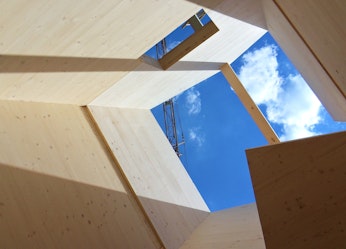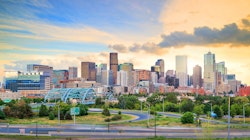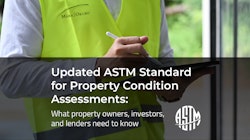

M|O Perspectives
Check back here for our thoughts on the latest developments in our industry.
Tall Timber: Future of CLT is Looking Up
Sep 07, 2021
Over the past decade, there’s been a dramatic rise in the use of cross-laminated timber (CLT) to construct warm, natural-looking and sustainable buildings. According to the Woodworks organization, over 1,000 multifamily, commercial and/or institutional projects are in design or construction with this type of multi-layered mass timber.
CLT is gaining traction due to its relative efficiency, affordability and simplicity when compared to traditional structures. A new tall timber code change Nonewill also open up the construction type to additional applications in the built environment.
Popular for constrained urban-infill projects, this lightweight natural wood product is also highly sustainable: It can store carbon and is a substitute for emission-intensive products such as concrete and steel. While CLT panels typically require transportation to a site, the carbon savings far outweigh the embodied energy added to such a project.
How is CLT or mass timber made?
Unlike heavy timber, which can be hard to source, mass timber is manufactured using small individual wood members formed into large panelized solid-wood construction. CLT is produced by stacking layers of timber, known as lamellas, at an offsite factory. Each of these layers is placed at 90 degrees to the layer below and then glued, using a non-toxic adhesive, and hydraulically pressed together to create a high-strength structural timber panel.
Common mass timber products include:
- Glue-laminated timber (Glulam)
- Cross-laminated timber (CLT)
- Dowel-laminated timber (DLT)
- Nail-laminated timber (NLT)
- Glue-laminated timber (GLT)
CLT in action: What we’re seeing
Marx|Okubo recently saw firsthand some of the benefits of cross-laminated timber in the One De Haro building construction. Developed by SKS Partners and designed by Pfau Long Architecture, it’s the first CLT structure in San Francisco, as well as California’s first multi-story mass timber building.
Previously serving as the home of a family-owned San Francisco gravel company, the three-story triangular-shaped site and location introduced challenges during the conceptual phase. Because a creek runs underground through concrete culverts along the north portion of the property, a deep pile foundation system is required for this CLT over concrete podium construction. Here the light weight of mass timber came in handy: The design team was able to reduce the amount of pile by approximately half when compared with concrete and steel structure.
Tall wood code changes sends CLT soaring
A recent U.S. code change means that these popular wood building projects can go up to 18 stories and 270 feet in height, a drastic change from the previous 85-foot, 6-story limit.
CLT was first recognized in the U.S. Building codes in the 2015 IBC and the 2016 CBC, which stipulated that CLT can be used in Type III, Type IV, and Type V construction if manufactured and identified in accordance with ANSI/APA PRG 320.
In December 2015, the International Code Council Board (ICC) established an Ad Hoc Committee on Tall Wood Building to primarily explore them from a fire/life safety and structural perspective, and investigate feasibility prior to developing and including code changes for tall wood building in the United States. The committee established six performance objectives to explore before pushing a proposal for code changes:
- Won’t collapse under reasonable scenarios of complete burn-out of fuel without automatic sprinkler protection being considered.
- Highly reliable fire suppression systems to reduce any risk of failure during reasonably expected fire scenarios. The degree of reliability should be proportional to evacuation time and the risk of collapse.
- No unusual high radiation exposure from the subject building to adjoining properties to present a risk of ignition under reasonably severe fire scenarios.
- No unusual response from typical radiation exposure from adjacent properties to present a risk of ignition of the subject building under severe fire scenarios.
- No unusual fire department access issues.
- Egress systems designed to protect building occupants during the design escape time, plus a factor of safety.
Following a series of five full-scale tests on two-story mass timber structures at the ATF lab, these code changes made the 2021 IBC provisions. The proposal creates three new types of construction; Type IV-A, IV-B, and IV-C, which set fire safety requirements and allowable heights, areas and number of stories for tall mass timber buildings.
- Type IV-A: 18 stories or 270 feet with allowable building area of 972,00 sf and average area per story of 54,000 sf. The entire mass timber structure must be protected with 100% non-combustible surfaces.
- Type IV-B: Up to 12 stories or 180 feet with allowable building area of 648,000 sf and average area per story of 54,000 sf. The entire mass timber structure must be protected 100% non-combustible surfaces, except limited areas; approximately 20% of ceiling or 40% of mass timber walls may be exposed.
- Type IV-C: Up to 9 stories or 85 feet with allowable building area of 405,000 sf and average area per story of 45,000 sf. All mass timber can be exposed, with exception to shafts, concealed spaces, and outside face of exterior walls.
California leading the tall timber code adoption
California is the first group to adopt the tall wood code change proposals into one agenda item and pass them unanimously, per the state fire marshal, citing these benefits:
- Increased market demand for mass timber production in California
- Increased pace and scale of wildland fire prevention and forest management goals
- Reduction of concrete and steel production carbon footprint
You can read the full code requirements for California here.
For more information about working with timber and new code changes, please contact Fuad Ferej or Gerard Lee.

What we do.
- Owner's Representation
- Property Condition Assessment
- Project Management
- Constructability Reviews
- Repair | Reconstruction
- Facility Condition Assessment
- Construction Loan Monitoring
- Accessibility
- Building Enclosure
- Fire | Life Safety
- Mechanical | Electrical | Plumbing
- ESG | Sustainability & Resiliency
- Structural Engineering
- ASAP® - Automated Structure Alert Program
Marx|Okubo is a national architecture/engineering/construction consulting firm that works with real estate owners, investors and lenders—at every point of the property lifecycle—to evaluate their building projects, solve complex challenges and implement tailored solutions. We help clients understand their projects’ complexities, so they can make more informed decisions and, ultimately, mitigate their risk.




